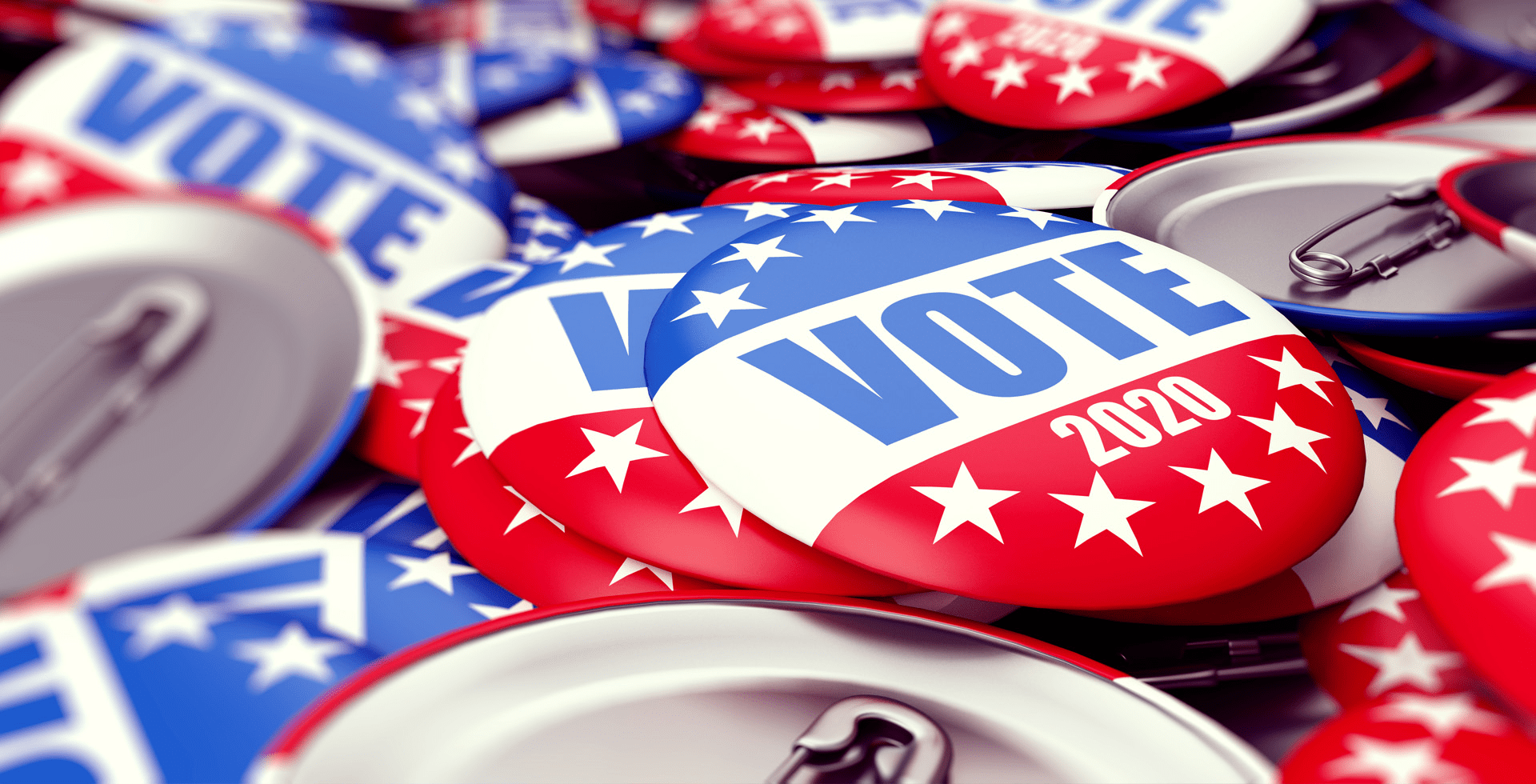A growth slowdown could change the course of the 2020 US elections

Summary
The US economy’s current good health is good news for President Donald Trump ahead of his bid for re-election later this year, but there is scope for market volatility – and even an economic deterioration – before November’s poll
Key takeaways
|
The 2020 US elections on 3 November will help determine the outlook for investors for years to come. Yet rather than try to predict who will win, we think investors should focus on economic issues in the coming months – concentrating on the environment we might expect and the factors affecting it, particularly fiscal stimulus and trade policy.
The presidential race is the most significant of 2020
Since the state of the economy has historically played a large role in how Americans vote in presidential elections, now is a good time to assess the outlook for growth and how it compares to past cycles. Right now, the US economy appears to be in decent shape – which is good news for President Donald Trump. Unemployment is at the lowest level since 1969 and GDP growth probably averaged about 2.3% in 2019. That’s faster than America’s long-run potential GDP growth rate of around 1.9%, although it’s a downshift from 2.9% in 2018.
The big question is whether this environment will last until the elections. Will unemployment remain historically low, will growth decelerate further and, if so, is there risk of recession?
History shows that a strong economy makes it much easier for a president to get re-elected
Our research shows that since 1948, incumbent US presidents have typically been re-elected – but not if the economy performs poorly leading up to the vote, and never during recession. In fact, over the last 71 years, only three incumbent presidents have lost re-election bids—Gerald Ford (1976), Jimmy Carter (1980) and George H.W. Bush (1992). All three battled tough economic conditions during their campaigns:
- Losing incumbents saw unemployment trend higher as their re-election contests progressed – moving from an average of 7.1% at the start of the ballot year to 7.5%during the vote. Conversely, every winning incumbent except President Dwight Eisenhower benefited from a strengthening job market, with unemployment falling from an average of 6.2% to 5.9% (see chart).
- Importantly, for losing incumbents, economic growth was markedly weaker during the months leading up
to and immediately following the election, averaging 2.2% from April-December versus 4.0% for the winners. And growth wasn’t just weaker; it slowed heading into November for Presidents Ford and Bush. President Carter was particularly unlucky, fighting outright economic contraction as Americans went to the polls. - Similar trends exist in other key data. For instance, consumer sentiment was significantly higher for winning incumbents than it was for those who lost, and employers hired workers at an accelerating pace as the winning incumbents were up for re-election.
- One anomaly: S&P 500 performance has not been a good election predictor. Losing incumbents generally campaigned during stronger equity markets than winners.

The effects of Mr. Trump’s 2017 tax stimulus are fading
No US president in modern history has campaigned in an environment with unemployment as low as it is today at 3.5%. If this continues, it will almost certainly help President Trump’s chances.
But the election-year trend is also important, and some estimates show that by the fourth quarter of 2020, GDP growth could slow to 1.7% – below potential – while unemployment could edge up to 3.7%. The reason? Mr. Trump’s 2017 tax law changes generated a temporary economic spurt that is now fading.
To understand this slowdown, consider S&P 500 corporate earnings. They grew faster than 20% through most of 2018 because Congress slashed the corporate tax rate by 14 percentage points, from 35% to 21%. But today – without additional tax cuts in place – earnings growth is rapidly slowing. In fact, S&P 500 profits probably grew less than 1% in 2019. Importantly, the same holds true for the broader economy: without the benefit of another USD 1.5 trillion tax package, economic growth has naturally started to slow.
The trade war is also pressuring the economy
Another reason the US economy may be slowing is the ongoing trade war between the US and other nations – particularly China. Mr. Trump is using tariffs and other measures to fix what he views as an unfair playing field. But this has created new problems – including retaliatory tariffs, reduced earnings for US multinationals, currency and commodity-market volatility, policy uncertainty and weaker business investment. The recently signed phase 1 US-China trade deal should dampen some of these pressures. But many of the toughest areas of disagreement have been deferred to a prospective phase 2 trade deal, which isn’t expected to get signed until after the US election—at the earliest. In the meantime, the bulk of tariffs remains in place.
While the world’s more cyclical, export-driven economies have been hard-hit since tariffs started ramping-up in early 2018, the US was insulated by the 2017 fiscal stimulus. Now, as the fiscal boost fades, trade war damage is washing-up on US shores.

Could the trade war lead to recession? Maybe. Our proprietary models show a significant acceleration in medium-term risks – a development that appears associated with rising trade uncertainty (see chart above).
Importantly, the threat of tariffs appears to be magnifying the downside risks. Although companies generally don’t like tariffs, they like uncertainty even less. When companies don’t know if policy could change materially in the short term, they have a tough time estimating the return on investment on long-range projects. If that translates into less business investment, then industrial production, manufacturing and hiring can also slow. These relationships mean that freezing or removing tariffs may not boost the outlook for growth as much as removing the threat of tariffs.
Nevertheless, the risk of recession has shrunk in recent months. And the economic slowdown that’s underway is partly the natural outcome from temporary fiscal stimulus – not a surprise or major concern. We’ve also seen spells of weakness previously: during the 2012 euro crisis and the 2015-2016 Chinese renminbi devaluations, the US economy got shakier but didn’t tip into recession. Keep in mind that the outlook for trade can change rapidly – perhaps even while you were reading this note. While that kind of uncertainty is one of the challenges facing the US economy as election season heats up, it also shows that risk has an upside as well as a downside.
Investment implications
- Volatility should accelerate in 2020 as headlines around trade and the US elections spur risk-on / risk-off conditions.
- Consider companies with strong balance sheets that could benefit from prospective economic re-acceleration while maintaining cash-flow if conditions slow further.
- Look for diversification, including alternative strategies that don’t correlate with the broader market.
- Recognise that the rise in recession risk has been material, but a downturn can be avoided – active management is increasingly important.
Coronavirus spread forces investors to think again

Summary
As the humanitarian costs of the coronavirus continue to rise, outbreaks beyond China are challenging the previous consensus view that the impact on markets could be relatively contained. Global stock markets are down, and negative sentiment may become a self-fulfilling prophecy, adding to the need for caution and an active approach.
Key takeaways
|













